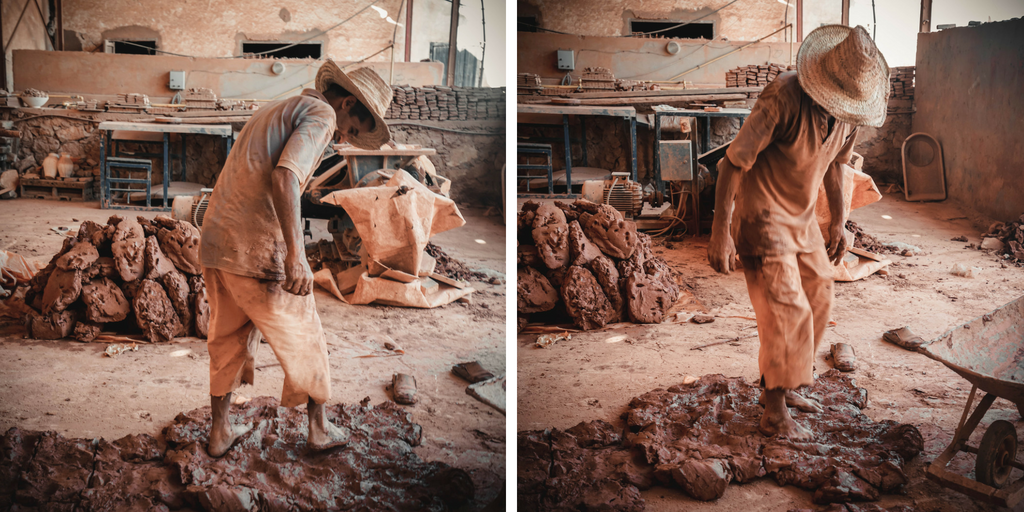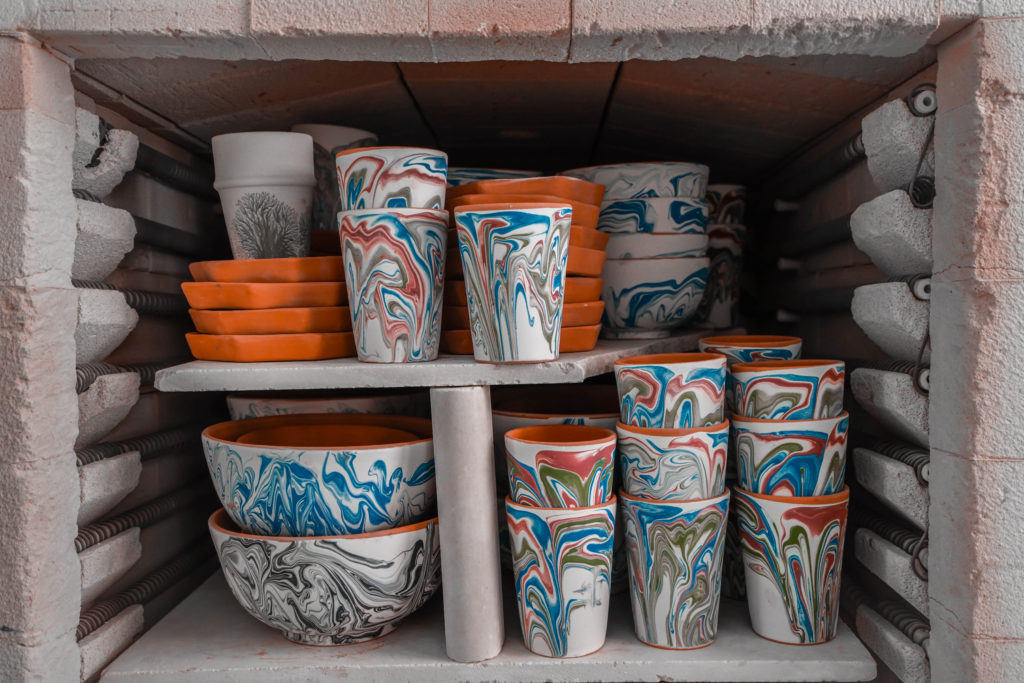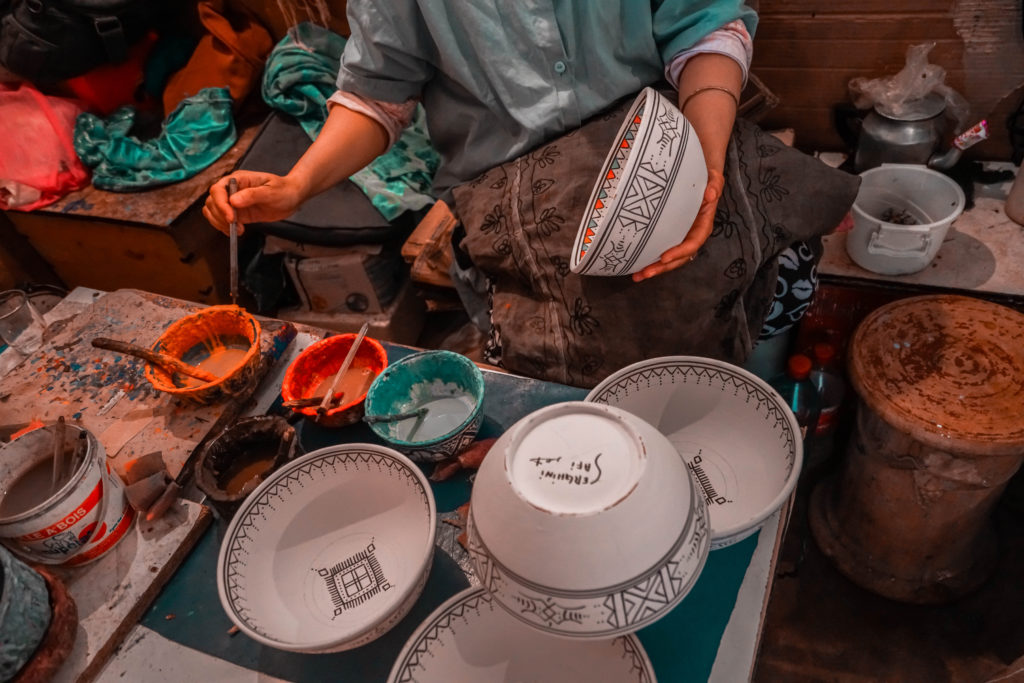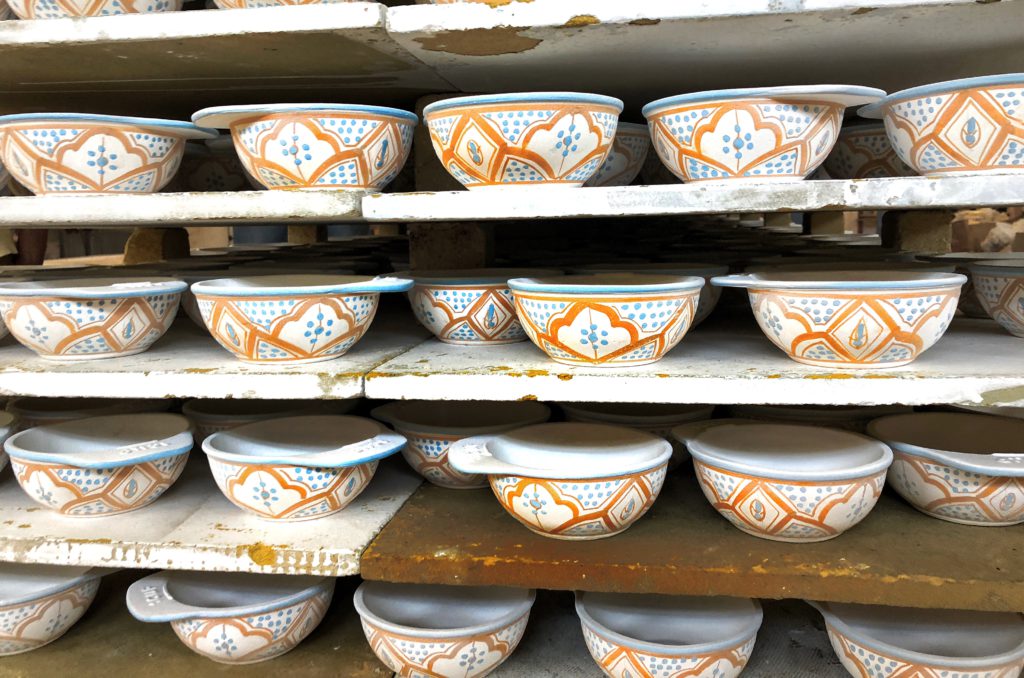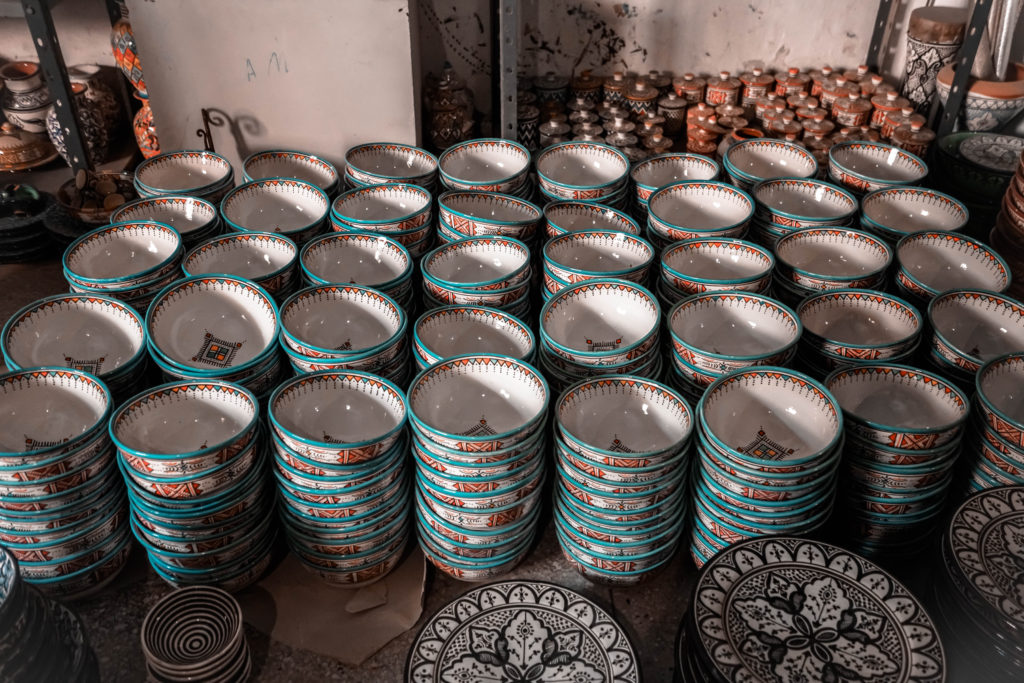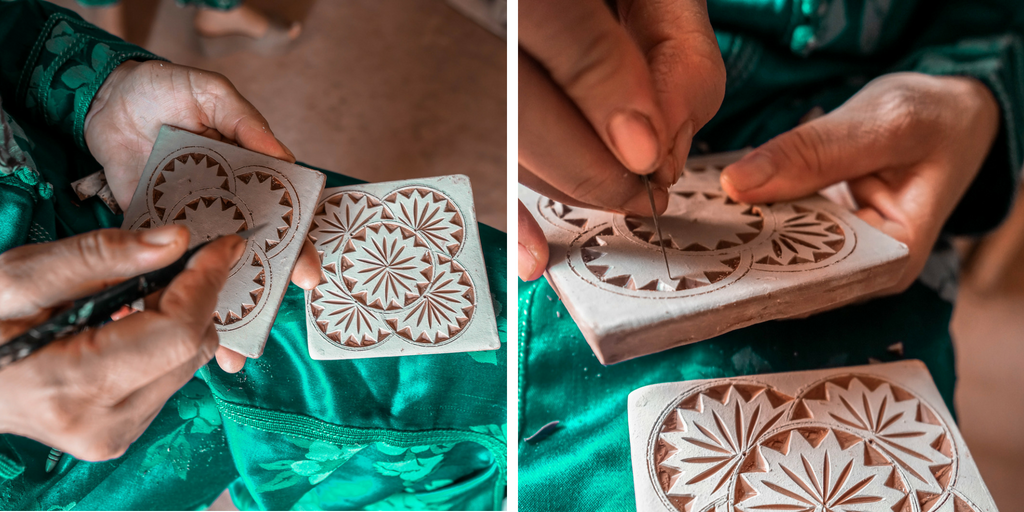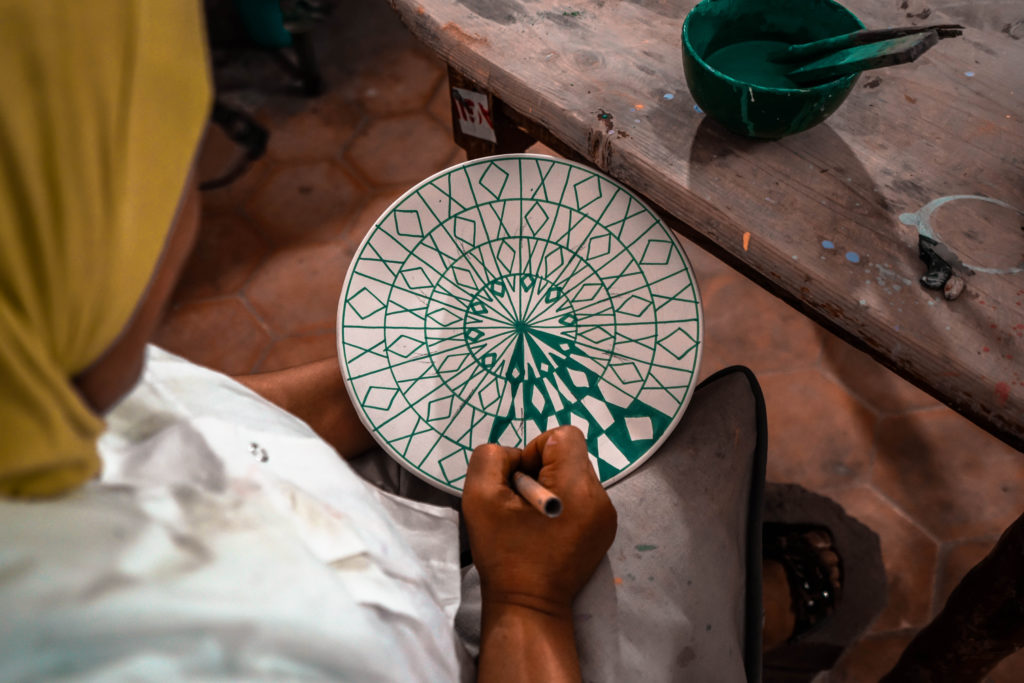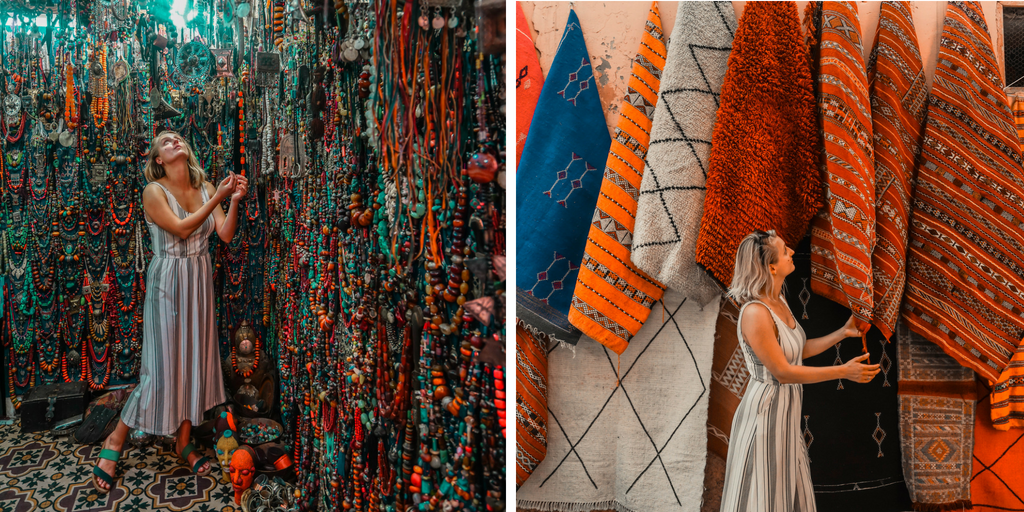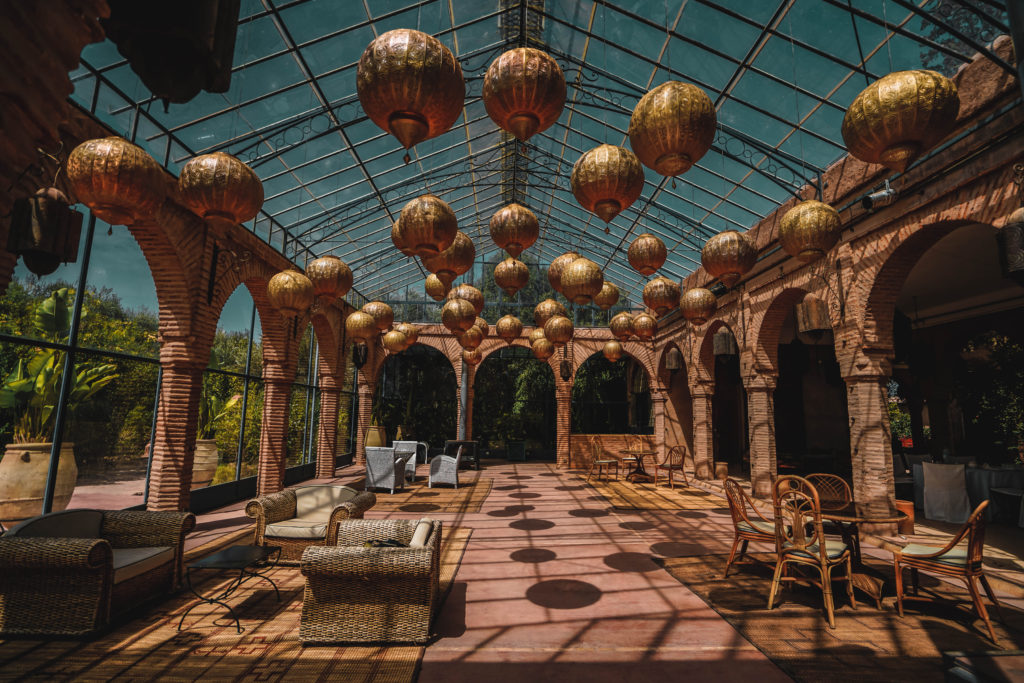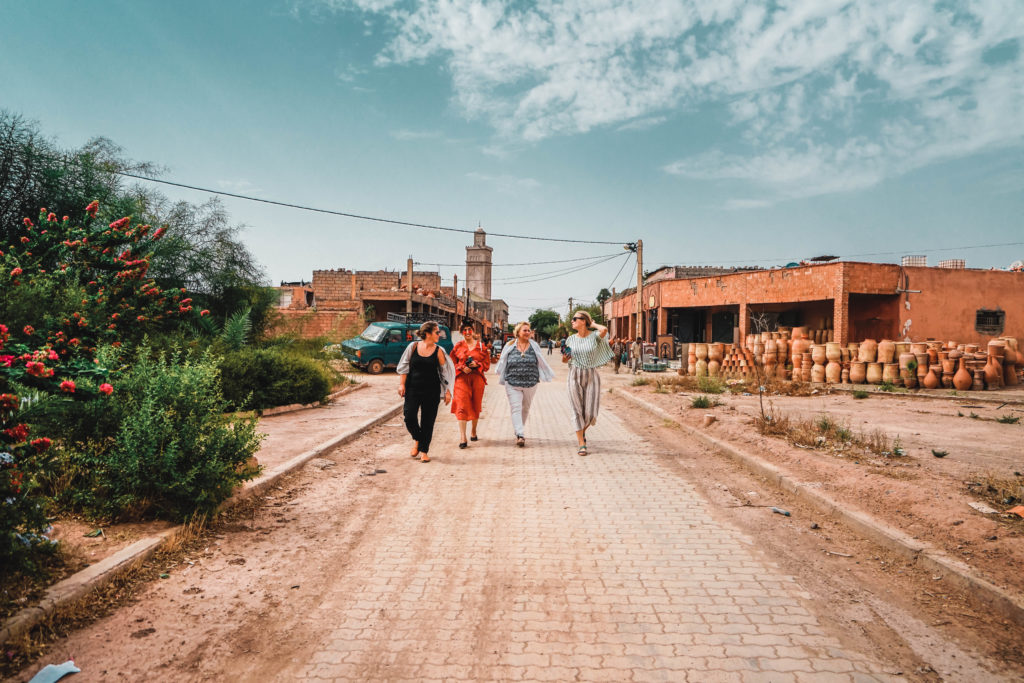On a visit to meet our artisans in Morocco, I was enamored by the beautiful artistry behind Moroccan ceramics. Morocco’s souks (open markets) are filled with colorful treasures, among them, a wide variety of handmade pottery. Ceramics of all varieties, shapes, and sizes, decorated by skilled hands, sit for sale. Our first stop was Safi, where our partners, Pottery Serghini, have been mastering the trade for over 8 generations!
Their factory is filled with sunbaked clay, twirling on wheels as they magically take form. I documented every step of the process to share with you! Here is a glimpse of the steps involved in making traditional Moroccan ceramics!
1. Sourcing Clay
Moroccan ceramics are traditionally made from red clay which, in its solid form, contains minerals and weathered rocks. The rocks are first collected and broken down to create powdered clay.
2. Wedging
Powdered clay is then mixed with water to form wet clay before starting the wedging process. This technique of mixing and rolling out clay using their feet upholds the clay’s integrity, making it consistent and air bubble free throughout.
3. Form
This is where the true magic happens and shapes finally take form. On a potter’s wheel, the clay is then turned into cohesive pieces where the body wall has an even thickness all around. Through skilled artisan hands, the clay is molded to perfection.
4. Fire
After being formed into intricate shapes for vases, cups, and dishes, the clay is left to dry for a few days before being fired using a kiln. This changes the clay’s structure into ceramic material without fully fusing it.
5. Glaze
Now the glazing process can begin. Glaze is a mixture comprised of ground glass, clays, coloring materials, and water. It is then applied to the bisque item by dipping, pouring, spraying, brushing, or a combination of all these techniques!
6. Decoration
Each piece is then hand-painted with the utmost precision, using multiple glazes to achieve the exact color and effect desired by the artist, who brings intricate designs and vivid colors to life!
7. Final Fire
The pieces are then fired one last time to seal everything in and fuse the bisque structure to the glaze.
These works of art then find their way into markets all over the world and into your homes! We’re so fortunate to take part in the preservation of this centuries-old tradition. Our exclusive Moroccan Collection with Pottery Serghini features extravagant designs from Islamic to Berber art and even modern styles!


